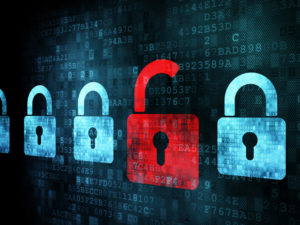 As companies begin to adjust to life in the new, remote world, there are a number of important considerations to address now that employees are not working in one central area. Working from home or other off-site locations has the potential to increase the risk of cyber attacks. A couple of weeks ago, Brian Califano was a guest on a podcast with Amy Goldsmith to discuss the impact of the Shield Act and how the new remote workplace is impacted by this legislation — you can listen to it here.
As companies begin to adjust to life in the new, remote world, there are a number of important considerations to address now that employees are not working in one central area. Working from home or other off-site locations has the potential to increase the risk of cyber attacks. A couple of weeks ago, Brian Califano was a guest on a podcast with Amy Goldsmith to discuss the impact of the Shield Act and how the new remote workplace is impacted by this legislation — you can listen to it here.
To further our understanding of the risks of cyber liability and the impact on the workplace, I spoke with Ed Cunningham, Partner at Plan B Technology. Plan B is a New York-based communications firm specializing in the design, implementation, and support of converged voice, data and mobility solutions. Their clients range from small businesses to multi-location corporate enterprises. Per Cunningham, here are the key takeaways that companies need to address with their remote workforce:
Install A Virtual Private Network (VPN)
A VPN is a service offered by a telecommunications company that allows you to securely and privately connect to the internet. Using an encrypted tunnel, a VPN protects a user’s sensitive data and confidentiality as the user interacts with physical servers and websites.
Educate your employees about threats
Anyone who uses a computer in your company needs to be aware of the various threats that put your business data at risk. Consider hiring an IT consultant who specializes in cybersecurity to hold training sessions or create webinars that teach your employees about email phishing, strong passwords, and safe online practices. All employees should be held accountable for knowing company policy and completing training courses about cybersecurity.
Keep your software updated.
Software programs frequently release updates that recognize and patch newly discovered vulnerabilities that allow cyber-criminals access to sensitive information. Virus and malware protection programs also release new updates weekly that block cyber threats. Make sure all computers are set to auto-update and checked frequently to verify the updates are installed.
Don’t Think That You Won’t Be Noticed
Smaller organizations are seen as easy targets because they take fewer cybersecurity measures than bigger companies. Research shows that 1 in 323 emails sent to small businesses contains malware, and there was a 424% increase in cyber attacks against small businesses in 2019. This is why even small businesses need to have IT staff dedicated to cybersecurity.
Make sure your user profiles are current
Some companies take for granted that their relationship with former employees is positive enough that they don’t have to rush to remove that person’s access to computer networks. As soon as an employee is terminated for any reason, your IT department should change all passwords, forward the employee’s email accounts, and remove the person’s VPN access.
Key Takeaway: Securing your company’s data and assets is critically important. As the workplace evolves into a more remote environment, data is more vulnerable to hackers. All SMBs need to assess their risk profile and determine if they have the right protection over their property. For further information on this important topic, reach out to us at info@acceleratingcfo.com or contact Ed Cunningham here.
Co-founders & Managing Partners
AcceleratingCFO